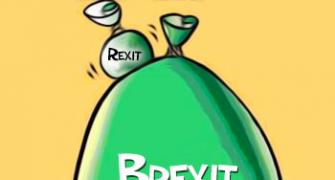
Here's how EPF stacks against other investment options
If you are a salaried individual, there is good news. The government of India has recently overturned its earlier decision to reduce the interest rate for EPF. With this rollback, EPF investments will earn an interest rate of 8.8 per cent instead of the 8.7 per cent offered earlier.
The interest rate for Provident Fund was 8.75 per cent in 2014-15, with the Central Board of Trustees (CBT) recommending the government to increase it to 8.8 per cent. The finance ministry however decreased the rate to 8.7 per cent to maintain EPFO surplus.
Now with interest rates increased back to 8.8 per cent, investing in EPF and VPF (Voluntary Provident Fund) can offset any loss you may encounter owing to lowering of interest rates in other small saving instruments.
Here is everything you need to know if you are planning to increase your EPF investment and how it stacks against other investment options.
EPF versus other small saving instruments
In a quest towards quarterly alignment of interest rates, there has been a drop in interest rates for virtually every small saving instrument. Instruments like Public Provident Fund (PPF), Kisan Vikas Patra (KVP), and senior citizen deposits have witnessed a drop in interest rates by as much as 1.3 per cent starting this financial year.
Interest rates for PPF, for example, have come down to 8.1 per cent starting April 1, compared to 8.7 per cent earlier. KVP and Sukanya Samridhi Scheme have also come down to 7.8 per cent and 8.6 per cent respectively, compared to 8.7 per cent and 9.2 per cent earlier.
EPF advantage over tenure of interest rates
With interest rates for all small saving instruments getting recalibrated every quarter and not fixed for the full financial year as earlier, there is a definite advantage for investments in EPF, which is fixed for the full financial year.
What an EPF rate hike to 8.8 per cent means for the common investor
More than the interest rate per se, the fact that interest rates for other small saving instruments have come down relative to EPF makes it an attractive investment option. The interest rate of 8.8 per cent is announced only for the financial year 2015-16 and there are chances that interest rates may come down in the future, but owing to the political and social impact of EPF rate movements, any drastic rate cut may not be in the offing.
This means you can make use of your EPF investments and can bank on them as a genuine retirement fund. In addition to the healthy interest rates, the fact that EPF is now easily portable through the Universal Account Number (UAN) and that the government has announced payment of interest for inoperative accounts also signal that EPF is a good investment option.
Is it time to recalibrate savings under Section80C?
While there is no surety that EPF may continue to offer such attractive interest rates in future, the fact that EPF is a retirement plan for a majority of the salaried class makes any drastic rate cut unlikely.
If you are a salaried individual, you contribute 12 per cent of your monthly salary towards EPF. You employer then matches your invested amount.
Now instead of investing in other small saving instruments like KVP or PPF which are now offering lower interest rates, it may be a good idea for you to consider investments in Voluntary Provident Fund (VPF) to recalibrate your investments under Section 80C. You can contribute any percentage of your salary over the mandated 12 per cent towards your VPF account. The interest offered is the same as EPF and the amount is also credited to your EPF account.
A word of caution for VPF investment
While investing in VPF may be a better option compared to other small saving instruments, know that the money invested in VPF remains locked in and can be withdrawn under specific circumstances such as retirement or loss of employment.
Many organisations allow employees to invest in VPF. To start investing at your company, you need to check your company’s rules.
EPF is one of the most popular retirement plans for the majority. With the finance ministry rolling back interest rate from 8.7 to 8.8 per cent, the government has tried to ease the pinch of lower interest rates on small saving instruments.
Illustration: Uttam Ghosh/Rediff.com
The author is CEO and co-founder, Bankbazaar.com









